Explore the Ancient City of Termessos: Turkey’s Best-Preserved Mountain Ruins
The Ancient City of Termessos, one of the best-preserved ancient cities in our country, has been designated as a national park due to its hot springs. This unique ancient city, nearly hidden in the pine forests, was built by one of the oldest peoples of Anatolia, believed to be the Solyms of Luwian origin. However, according to some sources, the city was founded by the Pisidians. So, where is the Ancient City of Termessos? How to visit the Ancient City of Termessos? And what to see in the Ancient City of Termessos? Let's explore together...
History of Termessos
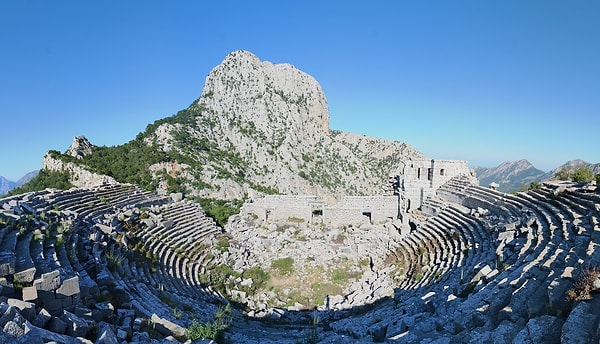
There are two different legends about the history of Termessos. The first is found in Homer's Iliad. According to this legend, the king of Lycia orders one of the ancient Greek heroes to conquer Termessos. The hero, riding his winged horse Pegasus, flies over the city and captures it by throwing stones from above. This hero is also known for slaying dragons.
According to another tale, Alexander the Great besieged Termessos in 333 BC. However, due to the strong defence of the people, he could not capture the city.
After Alexander's death, the Ptolemies captured the people of the city. In 189 BC, Isinda was also captured. As a result of the complaints of the people of this city, the city was subjected to penalties by the commander of the Roman forces of the time.
However, in 71 BC, the Roman Senate granted the people of Termessos the right to enact their own laws and make independent decisions.
Ruins of the Ancient City of Termessos
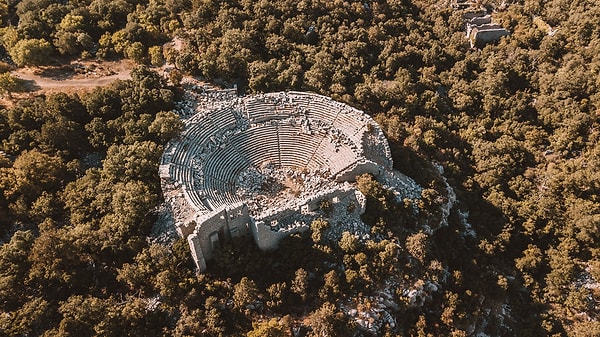
The Hellenistic period walls located near Yenicekahve on the Antalya-Korkuteli highway provide the first impressions of the city. These ruins extend until the summit of Güllük Mountain. A developed sewage system is among the most remarkable structures in the city and sheds light on the infrastructure of the period.
On the pathway leading to the ancient city, a temple from the reign of Emperor Hadrian, Ionic steps, and a monumental entrance greet visitors.
Continuing southward, one finds the Gymnasium, whose first floor is damaged. This building comprises many sections and rooms. To the southwest of the Gymnasium is a street adorned with large columns and various shops behind it.
Upon reaching a flatter area, one is welcomed by the section housing the city's official buildings. There, one can find an agora, a portico, an assembly building, and a very impressive theatre.
Features of the Ancient City of Termessos
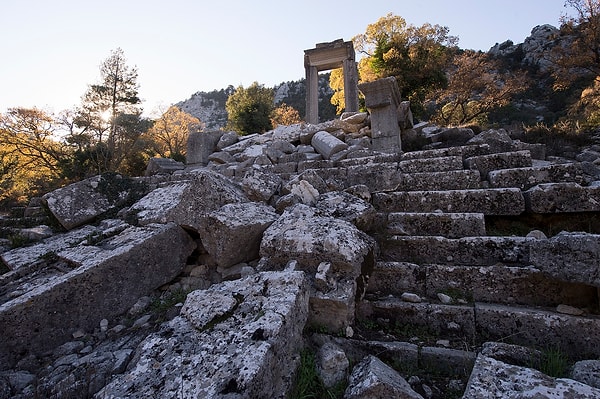
The region, also known as Güllük Mountain National Park, draws attention for its rich variety of vegetation. It serves as a kind of open-air zoo where endangered species thrive.
Although Termessos fostered friendly relations with the Roman Empire, it managed to remain independent. This independence is evident in the style of coins found in the city. The Roman Senate decided not to interfere in the internal affairs of Termessos.
The city also contains numerous temples and tombs, which are quite remarkable for their decorations and architectural styles.
Geographically situated in a challenging and steep region, the city was protected from external threats. Thanks to its elevated location, Termessos, which managed to evade the notice of even warrior communities, has survived to the present day almost unscathed, except for earthquakes and natural events.
Important Structures Found in the Ancient City
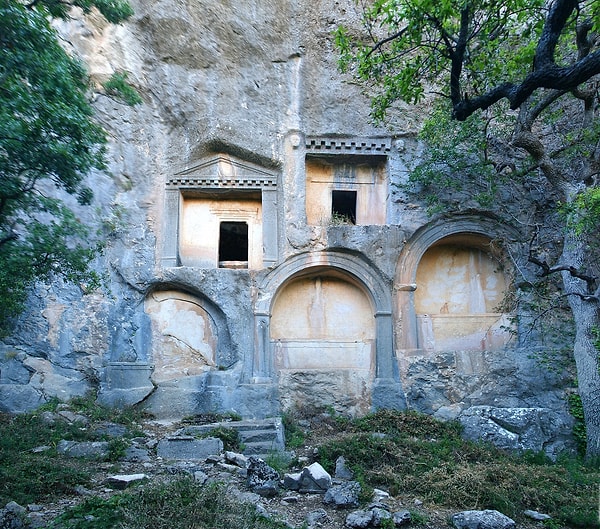
Temple of Artemis Hadrian - Propylon of Hadrian: The monumental temple dedicated to the goddess Artemis and Emperor Hadrian, along with its magnificent entrance gate.
Lower Fortifications: Defence systems located in the lower parts of the city.
City Entrance Gate: This is the main entrance to the ancient city, the first structure that welcomes visitors with its historical atmosphere.
Gymnasium - Baths: A complex where sporting and educational activities took place, including baths.
Collonaded Street: The vibrant main street that served as the heart of the city's trade and social life.
Upper Fortification: Walls and defence systems situated near the summit of the city.
King Street: The ceremonial road used by the city's important figures.
Osbaras Stoa: A long, covered, columned structure where locals gathered.
Theatre: Built on the mountainside, this impressive structure offers views of the sea and mountains and is renowned for its excellent acoustics.
Agora: A marketplace and public gathering place.
Odeon: An indoor venue used for small concerts and meetings.
Temples: Various religious buildings dedicated to the gods.
Founder's House: A building attributed to the city's founder, likely used for ceremonial and commemorative purposes.
Hero's Tomb: A monumental tomb of a local hero.
Upper Necropolis: The cemetery area is located in the upper part of the city.
Rock Tombs and Cult of the Dead: Tombs carved into the rock that reflect burial traditions.
Alketas Tomb: The burial site of the Macedonian commander Alketas, who sought refuge in Termessos and committed suicide there.
Lower Necropolis: The cemetery area is situated in the lower part of the city.
Where is the ancient City?

The ancient city is located along the Antalya-Korkuteli route. It is situated in the Bayatbademleri district of Antalya's Döşemealtı district, approximately 30 kilometres northwest of Antalya city centre, at the foot of Güllük Mountain.
Visiting Hours and Entrance Fee

Visiting Hours
Summer Period (1 April - 1 October)
- Weekdays and weekends: 10:00 - 19:00
Winter Period (1 October - 1 April)
- Weekdays and weekends: 08:30 - 17:30
Entrance Fee
- Entrance: 3 Euros
Museum Card holders: Free entrance twice a year
Museum Card Plus holders: Unlimited entry throughout the year
How to get to Termessos?
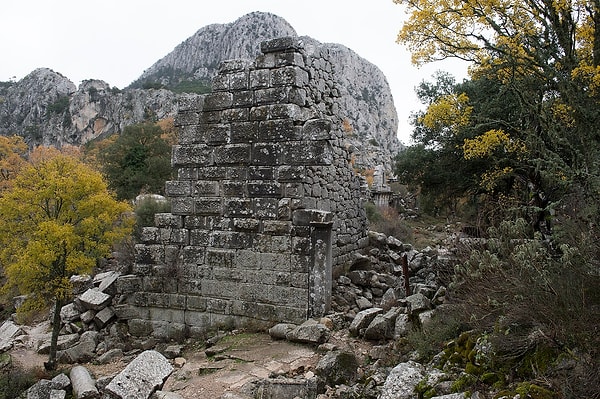
By Public Transportation
Transport is available via bus line 506.
By Private Car
From the 11th kilometre of the Antalya-Burdur road, turn towards Korkuteli. After 14 kilometres heading towards Korkuteli, you will see signs for the ancient city.
For those coming from Istanbul: The route is Bursa - Afyon - Burdur.
For those coming from Ankara: The route is Afyon - Burdur.
For those coming from Izmir: The route is Denizli - Acıpayam - Çavdar.
Visitor Reviews

“After entering the national park, 9 km of ramps and sharp roads with lots of bends await you. Don't forget water, sunscreen, a hat and glasses. Definitely do not come with slippers, as it will be like climbing a mountain. The theatre is well protected. It is intertwined with nature. Trees cover most of the buildings. This, of course, does not prevent you from seeing it. Ancient city lovers, you will not regret visiting here.”
“Termessos, very close to the centre of Antalya, is a wonderful place where you can admire the history of civilisation and spend the whole day with nature, history, sports and peace. You reach it by climbing the mountain for about 7 km after the main road. Even the view from the road is amazing. The parking area and its surroundings are suitable for picnics. Then there is a 1.5 km pedestrian climb. Outdoor shoes are a must. The structures, such as amphitheatre, baths, water network with mountain and sea views, are magnificent. Unique for photography enthusiasts. It is a must-see for anyone who wants to discover the historical side of Antalya.”
“The views and forest air are wonderful. The museum card is valid. Part of the road is a cliff on the right and a mountain on the left. After parking the car, a difficult climb awaits you. When you climb up, the view is mesmerising. The theatre has very good acoustics. On the way back, we descended the same road in 15-20 minutes. There are also areas where you can have a picnic. It was a beautiful, pleasant and tiring experience. It would be much better if there were more directional signs.”
Keşfet ile ziyaret ettiğin tüm kategorileri tek akışta gör!

Send Comment